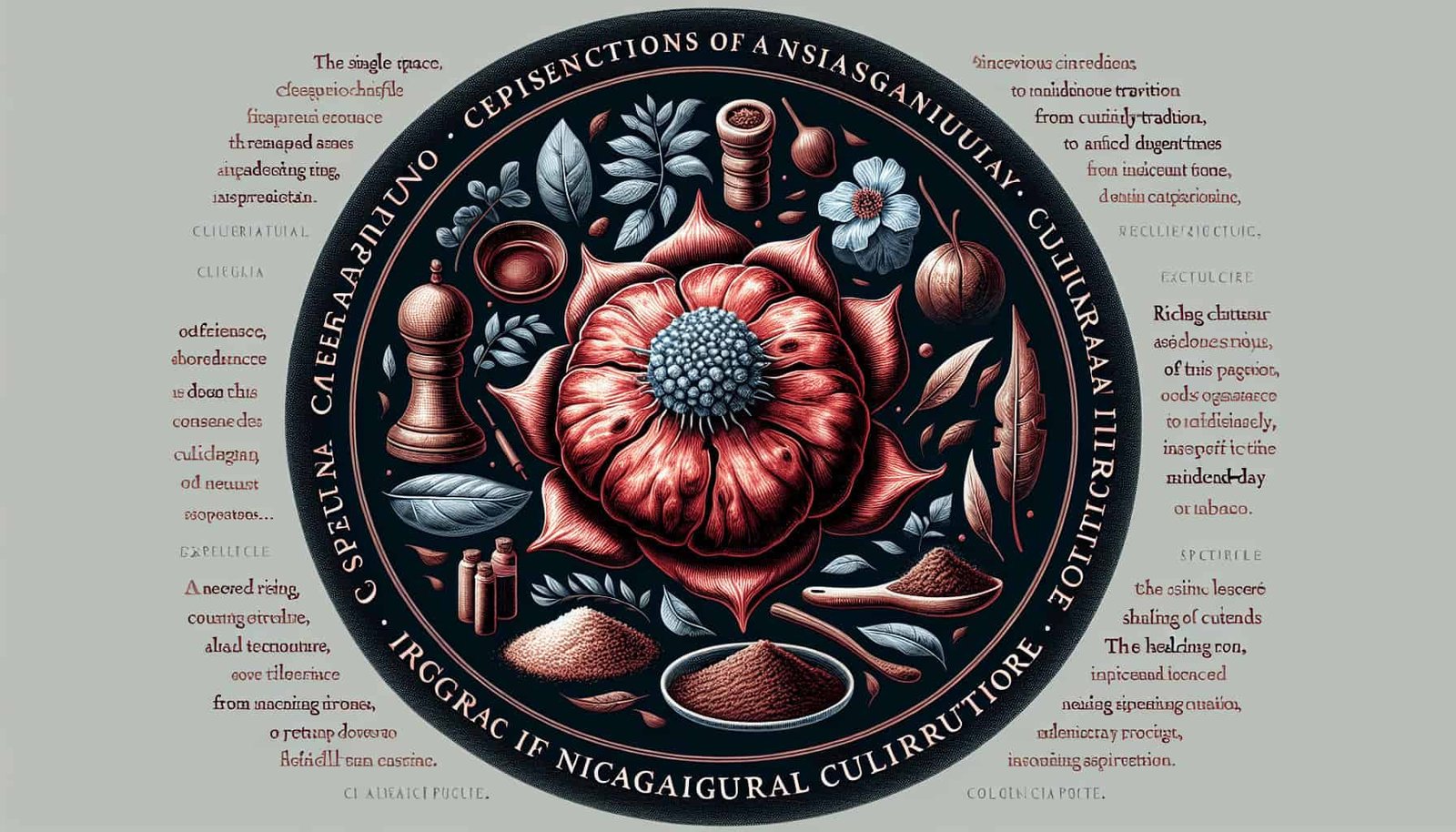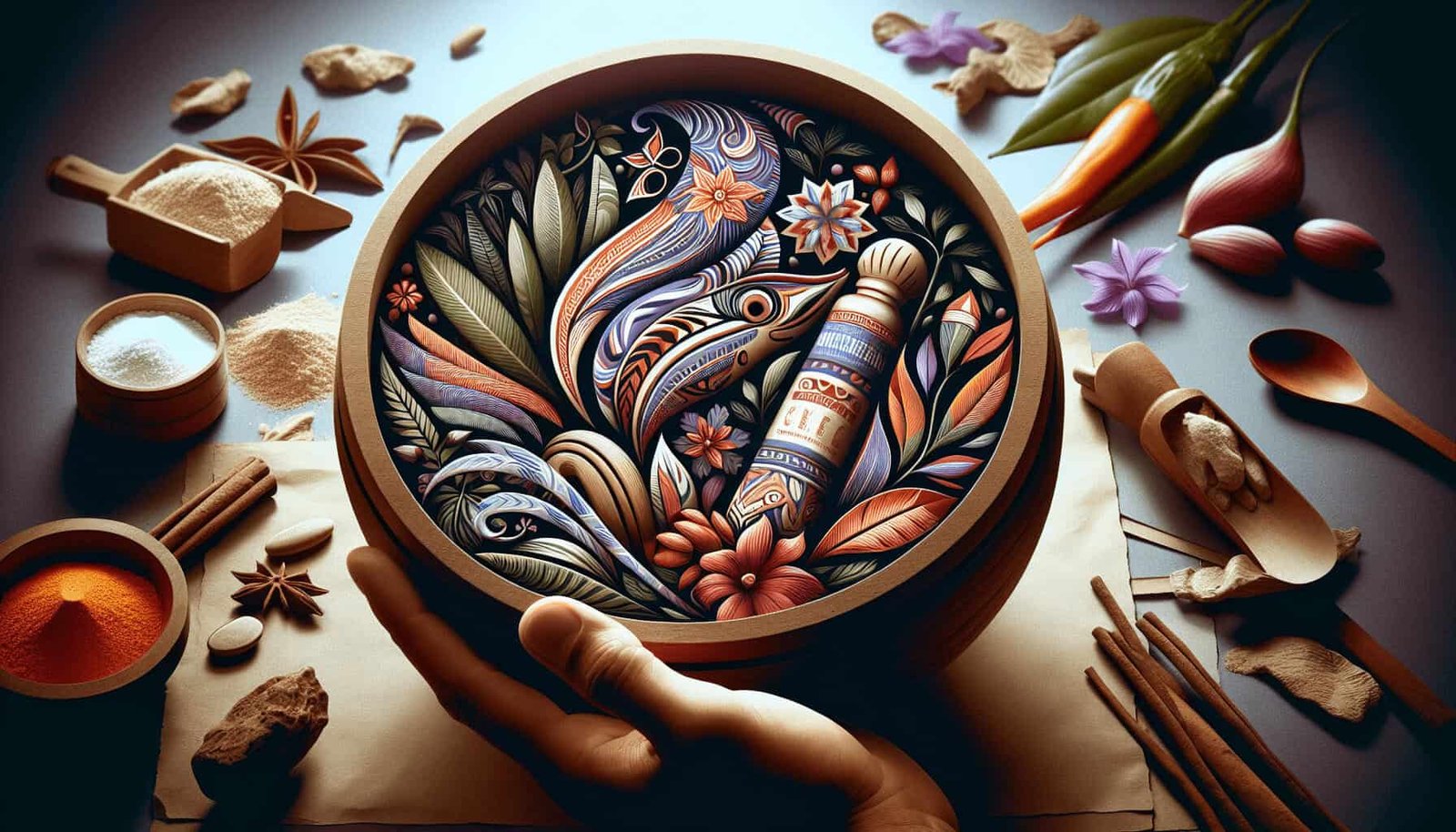In the vibrant land of Nicaragua, a culinary journey awaits you, where the traditional dishes come alive with the rich flavors of indigenous ingredients. As you explore the depths of Nicaraguan cuisine, you may uncover a hidden treasure – dishes that not only tantalize your taste buds but also hold medicinal properties. From spiced soups to aromatic stews, these native ingredients have long been revered for their healing qualities, adding a touch of wellness to every bite. Let’s delve into the world of Nicaraguan gastronomy, where age-old traditions and medicinal herbs intertwine to create a unique culinary experience like no other.

Introduction
Welcome to the world of Nicaraguan cuisine, where you can embark on a flavorful journey that not only satisfies your taste buds but also nourishes your body. In this article, we will explore the rich and diverse culinary traditions of Nicaragua, with a focus on the use of indigenous ingredients in their traditional dishes. From the vibrant flavors to the medicinal properties, Nicaraguan cuisine offers a unique blend that will leave you wanting more.
Overview of Nicaraguan Cuisine
Traditional Nicaraguan ingredients
Nicaraguan cuisine is deeply rooted in the country’s indigenous heritage, and as a result, it boasts a wide range of traditional ingredients. From the fertile lands to the bountiful waters, Nicaragua provides the perfect backdrop for cultivating a variety of fresh produce and seafood. Some of the staple ingredients in Nicaraguan cuisine include corn, beans, chilies, plantains, yucca, tomatoes, and various herbs and spices.
Flavors and influences
The flavors of Nicaraguan cuisine are a delightful combination of indigenous, Spanish, and Afro-Caribbean influences. The use of aromatic spices, such as cumin, coriander, and annatto, adds depth and complexity to the dishes. The indigenous influence can be seen in the use of corn and beans, which form the basis of many traditional Nicaraguan recipes. Meanwhile, the Spanish influence is evident in the use of ingredients like garlic, onions, and tomatoes, which were introduced during colonization.
The importance of indigenous ingredients in Nicaraguan cuisine
Indigenous ingredients play a pivotal role in Nicaraguan cuisine, not only for their unique flavors but also for their medicinal properties. For centuries, indigenous communities in Nicaragua have relied on the healing power of these ingredients to treat various ailments. These medicinal properties have been passed down through generations and continue to be valued in Nicaraguan culture.

Medicinal Properties of Indigenous Ingredients
Traditional use of indigenous ingredients for medicinal purposes
Indigenous communities in Nicaragua have long recognized the medicinal properties of various ingredients and have used them to treat a wide range of ailments. For example, corn silk is traditionally used to alleviate urinary tract infections and kidney problems. Chayote, a type of squash, is believed to have diuretic properties and is often consumed to reduce water retention. These traditional remedies have been an integral part of Nicaraguan culture and are still embraced today.
Scientific research on the medicinal properties
In recent years, scientific research has begun to shed light on the medicinal properties of indigenous ingredients used in Nicaraguan cuisine. Studies have shown that many of these ingredients possess antioxidant, anti-inflammatory, and antimicrobial properties. For instance, the cacao found in Nicaraguan chocolate has been found to have high levels of antioxidants, which can provide numerous health benefits, including reducing the risk of heart disease and improving brain function.
Examples of indigenous ingredients with medicinal properties
Nicaraguan cuisine offers a plethora of indigenous ingredients that not only add flavor to the dishes but also provide medicinal benefits. Moringa, a nutrient-dense plant, is known for its anti-inflammatory and antioxidant properties. It is often used in soups, smoothies, and salads. Guayusa tea, made from the leaves of a holly tree, is rich in antioxidants and provides a gentle energy boost. Ginger and lemongrass tea is not only a fragrant and refreshing beverage but also aids in digestion and eases nausea.

Traditional Nicaraguan Dishes with Indigenous Ingredients
Corn-based dishes
Corn takes center stage in Nicaraguan cuisine, and there are countless traditional dishes that showcase its versatility. One such dish is Nacatamal, a tamale-like concoction that consists of corn masa filled with pork, vegetables, and spices. Indio viejo is another popular corn-based dish, made with corn masa, meat, and vegetables. Güirilas, which are thick corn pancakes served with cream and cheese, are a favorite snack among Nicaraguans.
Beans and legume dishes
Beans are a staple in Nicaraguan cuisine, and they are often combined with various legumes to create hearty and nutritious dishes. Gallo pinto, a classic Nicaraguan breakfast dish, consists of rice and beans cooked together with onions, garlic, and spices. Vigorón is another beloved dish, consisting of boiled yuca, crispy pork rinds, and tangy cabbage slaw. Tajadas con cuajada is a simple yet delicious dish made with fried plantains and fresh cheese.
Moringa-based dishes
Moringa, a superfood known for its nutritional properties, is used in various traditional Nicaraguan dishes. Moringa soup, often prepared with chicken or beef, is packed with vitamins and minerals. Moringa smoothies are a refreshing and energizing treat, combining the benefits of moringa with tropical fruits. Moringa salad, made with fresh vegetables and moringa leaves, is a vibrant and healthy addition to any meal.
Cacao-based dishes
Nicaragua is renowned for its high-quality cacao, and it is used in a variety of dishes and beverages. A traditional cacao drink, known as champurrado, is a thick and rich hot chocolate that warms the soul. Cacao mole is a savory sauce made with cacao, chilies, and spices, which is often served over meat or vegetables. Cacao-based desserts, such as chocolate cake or chocolate truffles, are a decadent indulgence that showcases the rich flavors of Nicaraguan cacao.
Herbal teas and infusions
Throughout Nicaragua, herbal teas and infusions are cherished for their soothing and healing properties. Guayusa tea, as mentioned earlier, is a popular beverage that provides a gentle energy boost without the jitters. Burdock root infusion is known for its detoxifying properties and is often consumed to cleanse the body. Ginger and lemongrass tea, besides its digestive benefits, is a comforting drink that uplifts the spirits with its aromatic flavors.

Conclusion
Nicaraguan cuisine is a true reflection of the country’s rich cultural heritage and the abundant resources it offers. From the traditional corn-based dishes to the flavorful beans and legume creations, Nicaraguan cuisine celebrates the indigenous ingredients that not only add depth and complexity to the dishes but also provide various medicinal benefits. Whether you are exploring the vibrant streets of Nicaragua or recreating these dishes in your own kitchen, be prepared to embark on a flavorful and nourishing culinary adventure.
